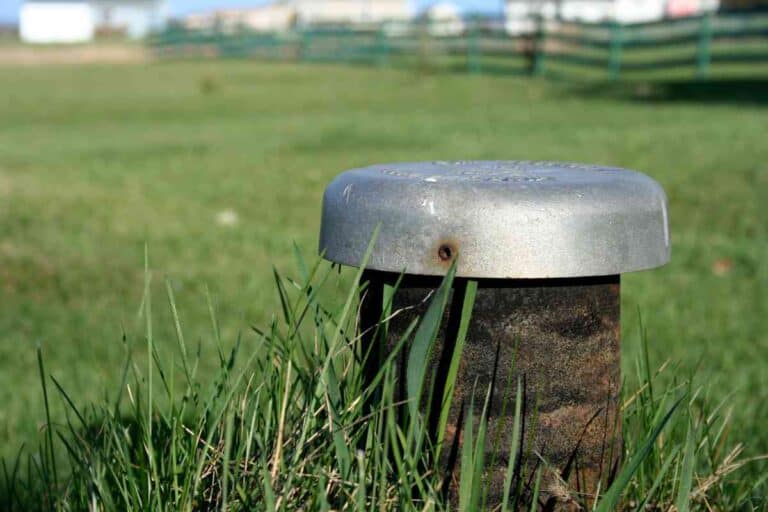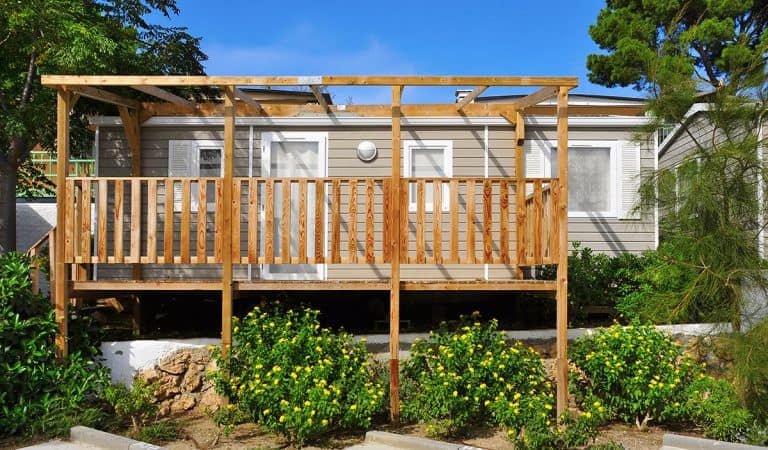Can a Walk-In Tub be Installed in a Mobile Home?
Walk-in bathtubs are an excellent option for those who still want to enjoy a relaxing bath but may no longer have the ability to do so in a traditional tub.
Today, several brands offer a wide array of walk-in tub styles that you can choose from to have professionally installed. This means that you can find a tub that fits your bathroom’s needs and will help keep the room accessible to everyone in a traditional home. But what about a mobile home?
In the past, installing a walk-in tub in a mobile home was a little more challenging, but today there are several options that you can choose from. While mobile home bathrooms may require a little more installation work, there are various sizes of walk-in tubs that will work perfectly in this style of home. In fact, some companies are now making smaller walk-in tub options that will work even in the tightest of spaces.
The best way to ensure that your walk-in tub will work in your mobile home accurately is to consult an expert on the matter. Most companies will have an installation team available that can help you choose a walk-in option that works for your home. They will also be able to install the tub correctly, ensuring it works for your needs for years to come.
Walk-In Tubs vs. Traditional Bathtubs
Of course, before you incur the costs of removing your traditional tub, you will want to know more about walk-in tubs to make sure they’re the right option for you.
The most significant difference between walk-in tubs compared to traditional baths is that they come equipped with a door that opens and closes on the front side; this allows the user to enter the tub without having to lift their legs over the threshold that traditional tubs have.
It may seem odd to have a door on a bathtub, but they are highly sealed to ensure that the water stays inside of the tub and does not flood out into your bathroom. They are often equipped with a fast-draining feature that ensures the water flows down quickly.
Similarly to more traditional tubs, you can choose additions to make your experience more enjoyable. Depending on the company that you purchase from, walk-in tubs can include bubble jets, showerheads, inside tub seating options, and handrails for added safety. You will also be able to choose from several styles, with companies offering various shapes and sizes depending on your bathroom.
Who Should Not Buy a Walk-In Tub?
While walk-in tubs are an excellent option for most individuals, they are only beneficial if you plan to take a bath regularly. If you do not enjoy taking a bath and would rather stick with showers, then simply making your shower more accessible is a smarter option. This can often save you money, especially for mobile home owners, as this can be much cheaper.
Also, if you cannot walk unassisted, are wheelchair-bound, or expect to be, these may not be a great choice. You may want to opt for a slide in bathtub instead so that you can easily enter and exit the tub. You always want to consider your circumstances and what will work best for your needs, weighing the pros and cons of various accessibility options.
Key Walk-In Tub Features for Mobile Homes
When choosing your walk-in tub, you will want to ensure that you choose a quality option that was created by a notable manufacturer. You will find that most major bathtub brands offer some form of walk-in tub option that you can choose from. You should never purchase from a company that seems illegitimate, or that offers prices that are simply too good to be true.
You should always read online reviews for the bathtub before purchasing as well to see what other homeowners have to say about the product. If you can find a tub that offers mobile home-specific reviews, this is even better as you can see if the tub worked well in a home similar to your own. If you have any questions, you should always ask the company itself to ensure that the tub will work for your home.
Some things to consider before making your tub purchase are:
- Swing-out doors on the tub will require you to have more clearance in front of the tub, which may not work for a smaller bathroom. Also, if the door fails to latch correctly, these tubs can make it more likely for your tub to flood your home. Doors that open inward may be a safer option but will require you to enter around the door.
- Make sure to look into how big the door of the tub is, how big the seat is, and how high the seat is. This will ensure that you fit inside of the tub comfortably and safely. If the seat is oddly small, it may not be worth the price or work well for you.
- As mentioned, consider the fill and drain time of the tub before purchasing, as paying for a quick fill faucet and quick drainage system can be very beneficial. This is an added feature that many walk-in tub users find very beneficial as they require you to sit in a cold tub for much less time.
- Look for tubs that come with an added warranty. Some companies will offer guarantees or warranties on their products, which can ensure you are getting a quality product.
- Consider a tub that you can see before purchasing, which may be available if the company has a physical office or if they are sold at your local furniture store. This will ensure that you like the tub and that it works for your needs, as you can see it firsthand before making any purchases.
How Much Do Walk-In Tubs Cost?
The price of your walk-in tub will vary greatly, depending on where you purchase it, the extras you add, the overall size, and much more. You can find a lower range tub for around $2,500, but they can go up to even $10,000 if there is a lot of added features. Of course, you will also want to budget in the costs of installation, especially if it is not included in the price of the tub or offered from where you purchased it.
The base price of installing a walk-in tub is around $700 to $3,000 depending on who you have install the tub. Some other factors that may increase your final costs are:
- Installation of larger pipes
- Adding a surrounding wall
- Labor costs (this may be higher for certain companies)
- Removal of your old tub if necessary
If you want to install a walk-in tub in a mobile home, it is also safe to assume the costs for the installation will generally be higher.
Some companies will offer financing options that may be beneficial if your budget is low. Finding a location with financing or flexible payments may make getting your new walk-in bathtub easier. Unfortunately, they are not often covered by insurance, so this may be the only option for you.
Can You Install Your Own Walk-in Tub?
If you are handy with housework or know someone who is, installing your own walk-in tub is always an option. Of course, this can save your money as you will not have to hire a professional team to do the services. Some brands will even provide you with instructions on how to install their specific model.
An issue that may present itself is that mobile home bathrooms can be smaller and may require a little more prep work for your new tub. This can require you to have more expertise in the installation process and essentially make hiring a professional team very beneficial.
However, if you feel that you have enough experience to handle the installation correctly, some basic steps you usually have to follow are:
- Add a Ledger Board – This will require you to find the top of the tub flange and identify where it will hit the wall studs. Once you find this point, mark it with a line, and then use a level to continue this line across all the studs that the tub will rest on. You will want to measure down an inch and add another mark, extending it again to all the framings. You will then attach a 2×4 lumber so that the top is even with the bottom mark all the way around; this can be installed using nails or screws, offering support for tub edges.
- Install a Shoe Fitting – You will have to remove your old tub, and that will leave drain lines from the underside and overflow that must be installed on your new walk-in bathtub. You can install these drain lines by laying the tub on its side and lining them up, look for any difference in measurements as this can be common with the overflow. Often the old shoe fitting should work for your new tub, but if not, you may need to make adjustments and put in a new pipe. Regardless, you will want to attach the tub drain and overflow accordingly and use plumbers’ putty liberally for these connections.
- Use a Mortar to Install Tub – You will want to pick up a mortar before starting the process and mix it at this time. You will use a trowel to spread it across the subfloor evenly, right in the area the walk-in tub will be placed. The mortar you apply should end up being a couple of inches thick. Note: You do not want the mortar to get on your drain lines, and once your mortar has laid appropriately, you will want to remove the rag that was installed in the drain line earlier on (a common step for tub installment).
- Now Install Your New Tub – At this time, you can take your walk-in tub and sit it in place, which may require you to enlist some help, as it can be large and cause damage to your tub or wall if not appropriately handled. You will need to lift the tub up and down into the area that you have prepped, ensuring it lines up with the shoe fitting and the drain line; this can be tricky, so pay special attention. Now is an excellent time to check the ledger boards you installed, as the tub edges should be sitting on them. You can also remove any extra mortar that is exposed.
- Get Everything Level – Reach for that level that you had earlier when installing your ledger boards and use it on the top front of the tub, installing wood shims if needed to ensure the unit is completely level. You will also want to do this from front to back, continuing to add shims if needed until it is as level as possible.
- Secure Your Tub – Once everything is level, and in place, you can begin securing the tub into place by hammering galvanized nails through the tub flange into the wall stud’s underneath. You will want to be careful during this process and can use a drill to slightly start the hole before hammering in the nails. You will also want to add the drain to the shoe fitting at this point through one of the access points.
- Finalize the Installation – The last steps are to install your new faucets, or for some tubs, you can even use the old ones you removed if you would like. This can be done easily using a screwdriver and is a relatively simple process. You will want to turn on the main water supply and check for any leaks in the supply or drain lines.
Of course, these are some of the more essential steps to the installation process, but your exact steps may vary depending on your bathroom and the type of walk-in tub that you have chosen. For example, for some models, there is a need to install surround panels, cement board, or other water-resistant materials around the top of the tub.
You will always want to reference any guidelines released by the manufacturer or consult an expert if you are uncertain of how your new walk-in tub will replace the old bathtub.
Some Things to Keep in Mind About Installation
Regardless of if you live in a mobile home or a more traditionally built home, you will want to consider the size of your bathroom and the various tub options available before making any purchases. There is nothing worse than paying the high price for a walk-in tub only to find that it does not fit in your bathroom correctly. Some basics to keep in mind before purchasing and installing your home are:
- Check Local Requirements – You will want to ensure that your tub and fixture comply with any local building and plumbing codes that may be in place. If you have non-certified plumbing fixtures, this may affect your insurance rates as well. If you have an installation expert complete the work, they will know more about this and how to ensure your new tub meets any and all requirements.
- Measure Both Inside and Outside of the Tub – You will want to take complete measurements of the tub to ensure that it will fit through your doorways and hallways for installation. You will want to measure every doorway and hallway that you will have to carry the tub through to ensure putting it in place is possible. You may have to opt for a smaller tub depending on your mobile home’s size.
- Consider How Much Water the Bath Holds – One thing many do not think about is that walk-in tubs can be very deep and may require more hot water than your current water heater will support. This may, unfortunately, require you to replace your water heater to have a good, warm bath each time, and the type of water heater you choose may be limited depending on the type of mobile home you have. Clearly, this can lead to added installation times and costs, so you should factor this in before purchasing.
Conclusion
Walk-in bathtubs are a great way to continue having the independence that you love despite physical constraints. This style of a bathtub can be installed in practically any style home, including mobile homes—as long as it’s done correctly with the proper installation techniques. While you will always want to consider your budget, hiring a professional installation team is a great way to have your bathtub installed the right way, the first time.
However, no matter how your walk-in tub gets into your home, you are bound to love this fantastic addition to your mobile home.






